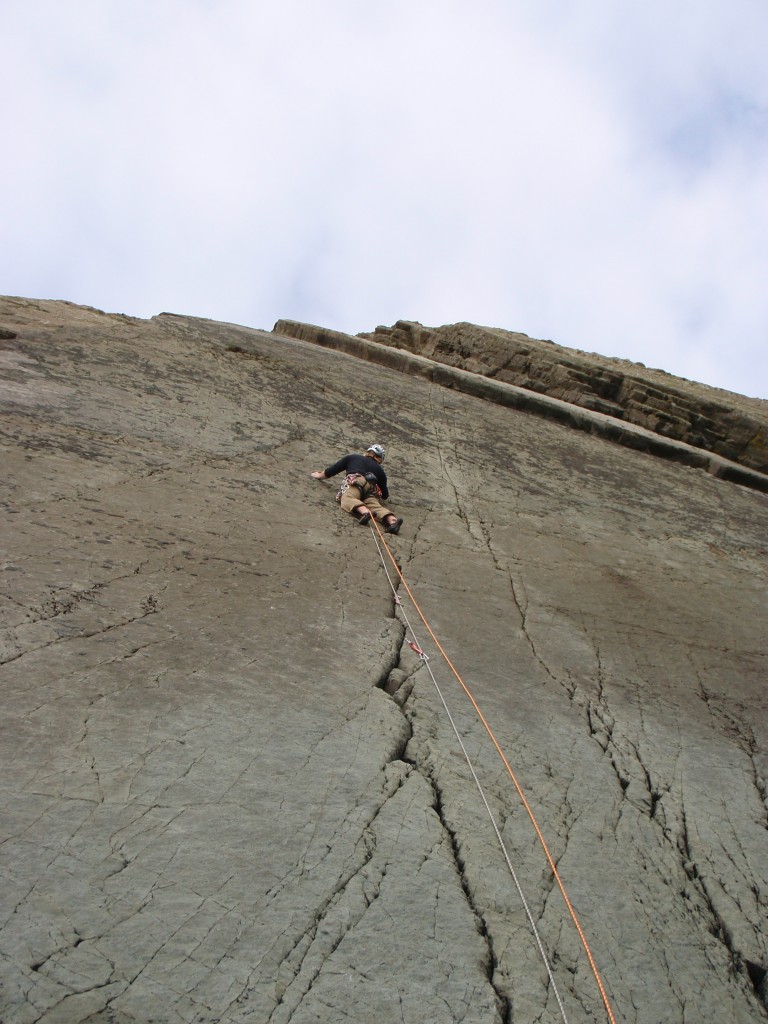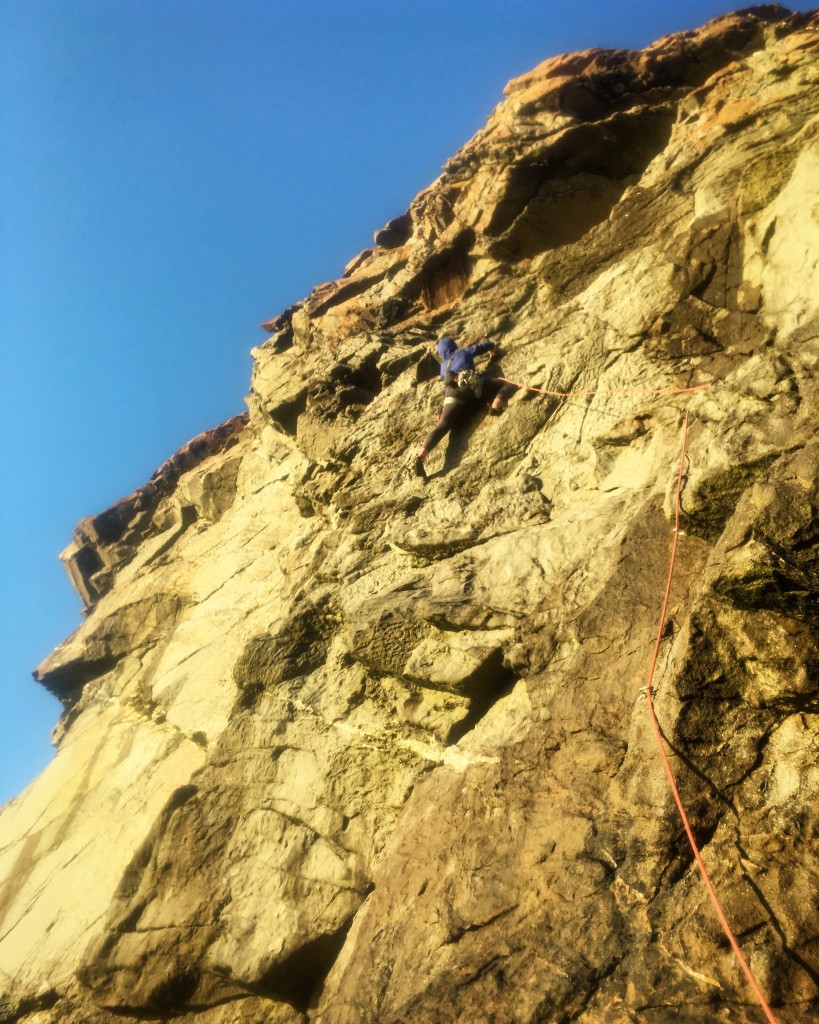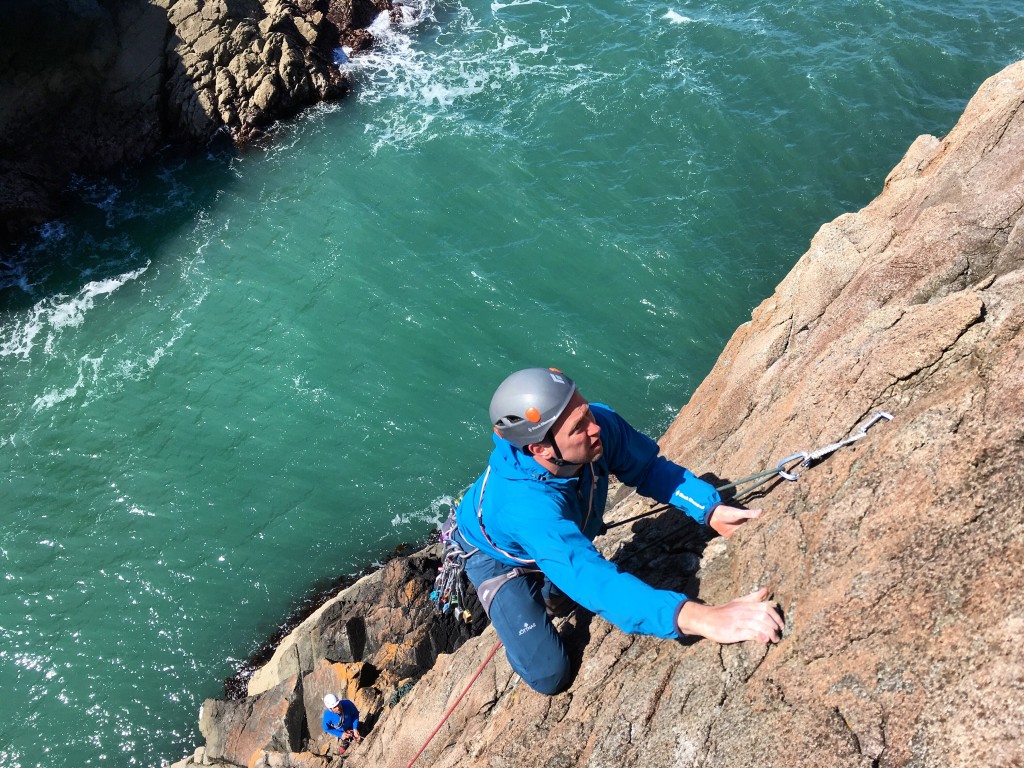Following on from last weeks starting Trad Climbing Kit Article, here’s a run down of what kit you might need to move into the realms of Multi-Pitch Trad Climbing:
By now you’ve done plenty of single pitch climbing, and your chomping at the bit to get onto some longer routes, right? Hopefully you’ve acquired the skills to safely and correctly place gear, how to extend it properly to reduce rope-drag, and multiple ways of attaching yourself into a belay as well as probably having done some abseiling. The transition to trad multi-pitch climbing should be a fairly smooth one and progress should be fairly rapid, as you’re just adapting skills you already have…
Now you’re getting on longer routes, it makes sense we might need more gear. All the previous information on kit holds true, so if you’re playing catch up check out the previous article: trad starter rack. All we really need is some duplicates of equipment we already have, plus perhaps a few new bits and pieces. This article is assuming we’re still looking at easy to mid-grade routes, and we shall look at specialist kit for harder routes another time…
So, first up, get some more nuts! We started out with a single set of nuts, now we will want to double them all up. It might be an idea to go for the different brand to what you went with before. Slightly different shapes (even though the sizes are the same) give you more options. The DMM nuts tend to be a bit fatter and curvy, whilst Wildcountry are slimmer and straighter. I like to rack them in 4 size sets on separate carabiners. Roughly 1-3, 4-6, 7-9, 10-11. Too many nuts on a crab gets messy.
Last time we looked at hexes. Now I’m not saying scrap them, they are great on some traditional mountain routes, but now it’s time to think about getting some cams, which can make hexes a little redundant. It’s definitely best to leave these till now, as you really need to serve your apprenticeship placing really decent passive (nuts, hexes – no moving bits) protection first. Cams are what we call active protection (moving parts) and far, far too many people place them in a totally useless way as they simply don’t understand how it works. Placed well, in decent rock, cams are awesome bits of kit, and vital bits of kit in certain places (Stanage, any Gritstone or Granite crag etc…). You may be limited by cost as they are expensive, but in an ideal world we would get a set of at 1-4 including half sizes ( ie-7 cams!) but obviously that’s a retail value of mega$$! As a minimum I would try and get sizes 1,2,3 and you can build it up over time. Perhaps go in half’s with your climbing partner? Of the many brands out there, I would look at the excellent DMM Dragon, with useful extendable sling, or the Black Diamond Camalots. The golden rule with cams is extend extend extend! You’ll cry if they walk back into a crack to be lost forever or the rope drag inverts them and they get stuck!
We’re going to need to splash out on new ropes too. So far, we’ve been climbing on 1 single rope, which is great for sport climbing, indoors, and straight up trad climbs. There’s a good chance now on the multi-pitch climbs our routes will wander back and forth, with protection all over the place, and there’s a good chance you might start looking at retrievable abseils to descend from the crags. SO what we need, is a pair of half ropes. These are indicated with the rope mark, a circle with a half symbol inside (1/2). Using 2 ropes allow us to reduce rope drag (by clipping the rope nearest the straight line of kit we place), do a full length retrievable abseil, and also put lower impact on the kit (not that we’d be placing gear of dubious quality though eh?!) For UK trad, get 50 or 60m ropes – oh and make sure they are different colours! I’m a big fan of the offerings from Mammut.

About to step right into the next crack, you can see how using 2 half ropes can reduce rope drag… Route: Amorican – VS 4c – One of the best VS’s anywhere! Caerfai Bay, Pembrokeshire…
Something to think about now is what problems might occur when climbng that you need to sort out. Remember, once you’re more than a pitch up you can’t simply lower an injured climber to the floor, and once committed, escape might be difficult – you may need to abandon gear if retreating. The techniques need to be learned are many and varied, and that’s another article. Better still, book on one of our “Self Rescue for Climbers Courses“! However, have a think about what kit you have and how it can be used to sort out problems. Remember we had 2 prussik loops from our trad starter kit list as well as some slings. You will need to double the amount of screw gates we mentioned (your going to need enough for 2 belays on multi-pitch climbs remember)!
The world of Multi-Pitch Climbing opens up so many possibilities for you, and is a vital stepping stone if you want to head into the Mountains, the Alps and further afield. Perhaps you’ve aspirations to go Big Walling? Maybe it’s Winter Climbing? Either way, this is it! You’re well on your way to being a proper climber!

If you come on a course with us you’ll receive a 15% discount voucher for V12 in Llanberis – one of the best climbing shops going!



